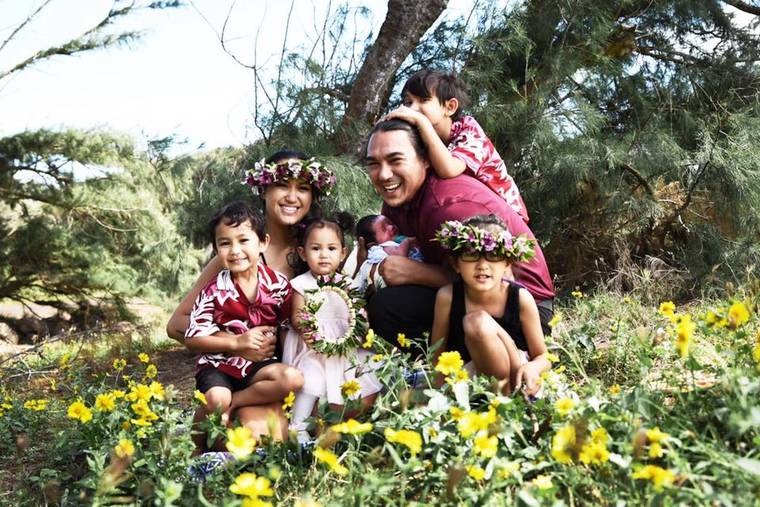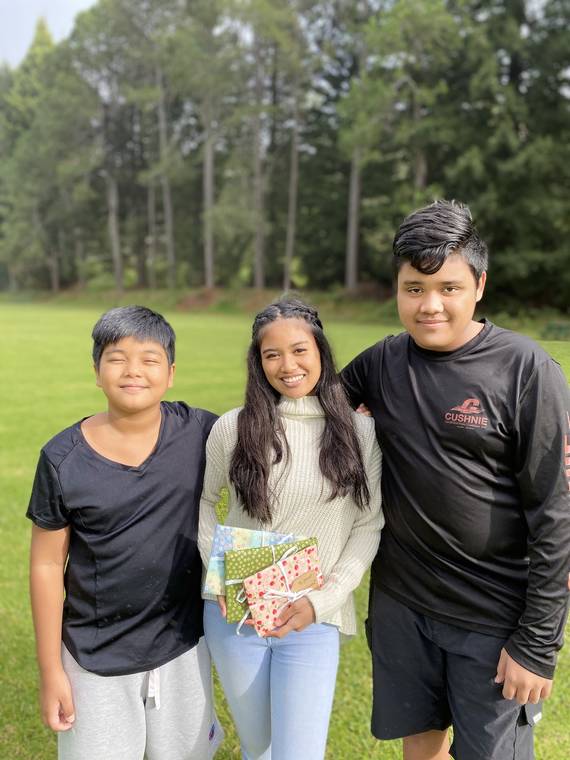• Editor’s note: This is the second of two stories highlighting February as Hawaiian Language Month. The first installment ran Sunday.
February is Mahina ‘Olelo Hawai‘i (the month of the Hawaiian Language).
Kumu Kahealani Hamakua of Ka ‘Oha, a blended program of Kanu o Ka ‘Aina that includes various ‘ohana groups across the islands serving students in grades kindergarten to 12, shares her na‘auao (knowledge) on the importance of teaching the Hawaiian language.
And two Kamehameha School students share what this month means to them.
In Hawaiian, Hamakua said “Mai Kahikina a ka la puka i Ha‘eha‘e a i ka mole ‘o Lehua, Aloha mai kakou. O wau no ‘o Kahealani Hamakua, ‘o Moloka‘i ku‘u kulaiwi a ‘o Kaua‘i ko‘u nohona. He kama au mai ka Punana Leo ‘o Moloka‘i (94) a me ke Kula Kaiapuni o ‘O Hina I Ka Malama (06).”
Translated to English, she said, “My name is Kahealani Hamakua, I am born and raised on the island of Moloka‘i but reside here in Hanama‘ulu, Kaua‘i. I am truly blessed to have been brought up in ‘Olelo Hawai‘i from the age of 3. I am currently a Kumu (teacher) for Ka ‘Oha. As many of you know, ‘Olelo Hawai‘i was recognized as an official language here in Hawai‘i, and in 2012, an amendment of the Hawai‘i Revised Statutes provided that the month of February be designated as ‘Mahina ‘Olelo Hawai‘i,’ or Hawaiian Language Month.”
According to Hamakua, this measure was the first act to be codified in Hawaiian and English.
“It’s stated, and I quote, ‘Mahina ‘Olelo Hawai‘i: E ike mau a e kapa ‘ia ana a‘e ka mahina ‘o Pepeluali ‘o ia ka ‘Mahina ‘Olelo Hawai‘i i mea e ho‘omaika‘i a e paipai aku ai i ka ‘Olelo ‘ana o ua ‘olelo Makuahine nei la,’” Hamakua said.
Translated to English, “The month of February shall be known and designated as Mahina ‘Olelo Hawai‘i to celebrate and encourage the use of Hawaiian language.”
Hamakua shared an important Hawaiian proverb that has better shaped her perspective of her culture and her kuleana: “I share with you a Hawaiian proverb (or ‘Olelo No‘eau): ‘O ka ‘Olelo o ke ka‘a o ka Mauli — Language is the fiber that binds us to our culture identity,” Hamakua said.
“No‘u ‘iho, ‘Olelo Hawai‘i has truly shaped me into understanding who I am while guiding me into embracing what my kuleana is in this ola, life. One of those kuleana is to educate our future generations on the value and importance of ‘Olelo Hawai‘i, in hopes that through the teachings of language, the identity of our people will live on forever.”
Hamakua said, “‘O ka ‘oiai‘o, ina ua loa‘a ‘ole ka ‘Olelo Hawai‘i, he kumu ‘ole. Ina ua loa‘a ‘ole ka ‘Olelo Hawai‘i, he waiwai ‘ole. I na loa‘a ‘ole ka ‘Olelo Hawai‘i, aloha ‘ino.
Translated to English, “Personally, if there was no Hawaiian language, there would be no purpose,” Hamakua said. “If there was no Hawaiian language, there would be no values. If there was no Hawaiian language, then all is lost.”
Hamakua said “He wahi Mahalo keia no ke kono ana mai e mahele i ka waiwai o ka ‘Olelo Hawai‘i ia‘u, he paipai keia ia kakou pakahi ‘apau e ho‘ohana i ka ‘Olelo Hawai‘i ma na wahi apau. E ola mau ka ‘Olelo Hawai‘i.
Hamakua currently has five keiki, and four of her keiki are in Hawaiian language schools. Nu‘uhiwa Giminiz, papa (grade) five, Kaihekia‘i Giminiz, papa four, and Kukui Giminiz, papa one, attend Kawaikini New Century Public Charter School in Puhi, and Pololu Giminiz attends Punana Leo o Kaua‘i preschool in Lihu‘e.
Meanwhile, Syler Nero, an eighth-grader at Kamehameha Middle School, and his sister Aaliyah Nero, a ninth-grader at Kamehameha High School and a freshman at Hawai‘i Pacific University, echoed Hamakua on why it’s important for them to learn their culture and their Hawaiian language.
“It is important to learn the language because the percentages of our Hawaiian culture has been slowly going down,” Syler Nero said.
“And the more we get people to learn our language, the more we have a higher percentage in our own speakers. And it will make our culture stronger. The percentage of the fluent speakers and for Hawaiian people, at 1%, is low, like there’s not as much as before, so we’re trying to make it go higher by teaching people how to speak Hawaiian.”
Aaliyah Nero agrees with him, and shares her na‘auao.
“I live in Hawai‘i and I have Hawaiian blood,” Aaliyah Nero said.
“And I want to know more about how I became, how my Hawaiian ancestors moved in, and how they kept the culture going.
“This month is important because you can share your culture, just like the Black community. They can share their culture as well with others,” she said.
”And all in all, initially, cultures will suit the values that you have of them, and not just seeing artifacts of it. So, for instance, when people come to Hawai‘i, they have stereotypes, but when they talk to people who are white, who are from Hawai‘i, then they see the values of why we do these things here, and they will have a deeper meaning. They do that because they respect our culture and everything, and hopefully things will be peaceful.”
10 Hawaiian words and phrases
Following are 10 commonly-used Hawaiian words and phrases, and their English translations:
1. Aloha — Hello, Goodbye
2. Mahalo — Thank you
3. Kuleana — Responsibility
4. Hale — Home
5. Pule — Prayer
6. ‘Ohana — Family
7. Wahine — Woman
8. Kane — Man
9. A hui hou — Until we meet again
10. ‘Aina — Land
— Compiled by Stephanie Shinno



